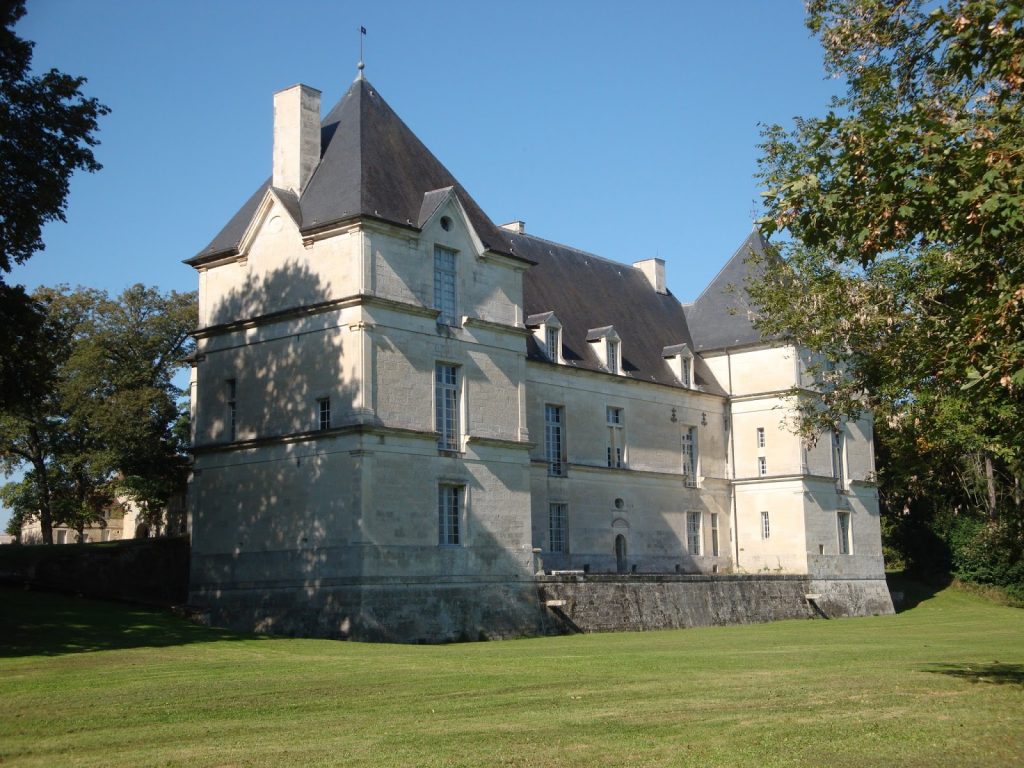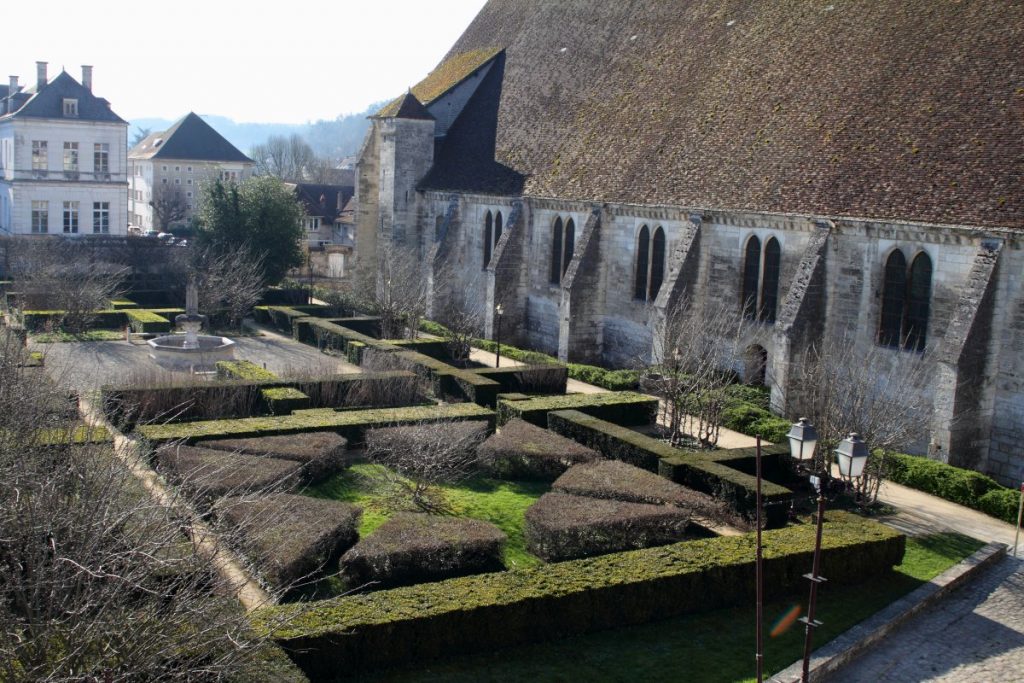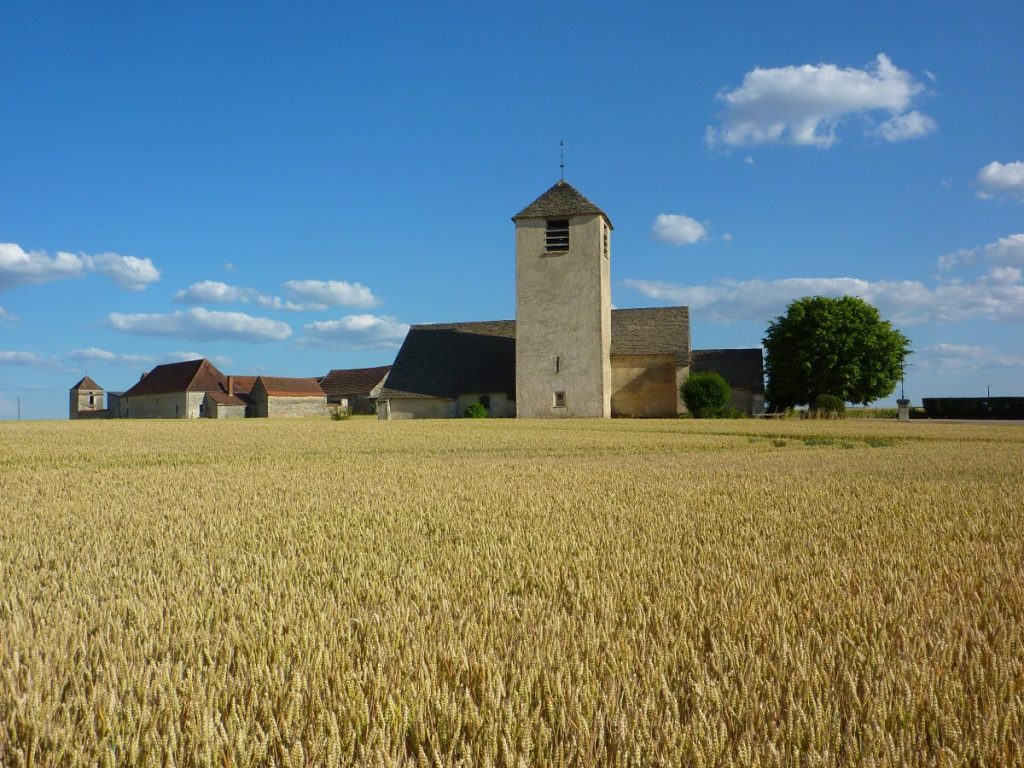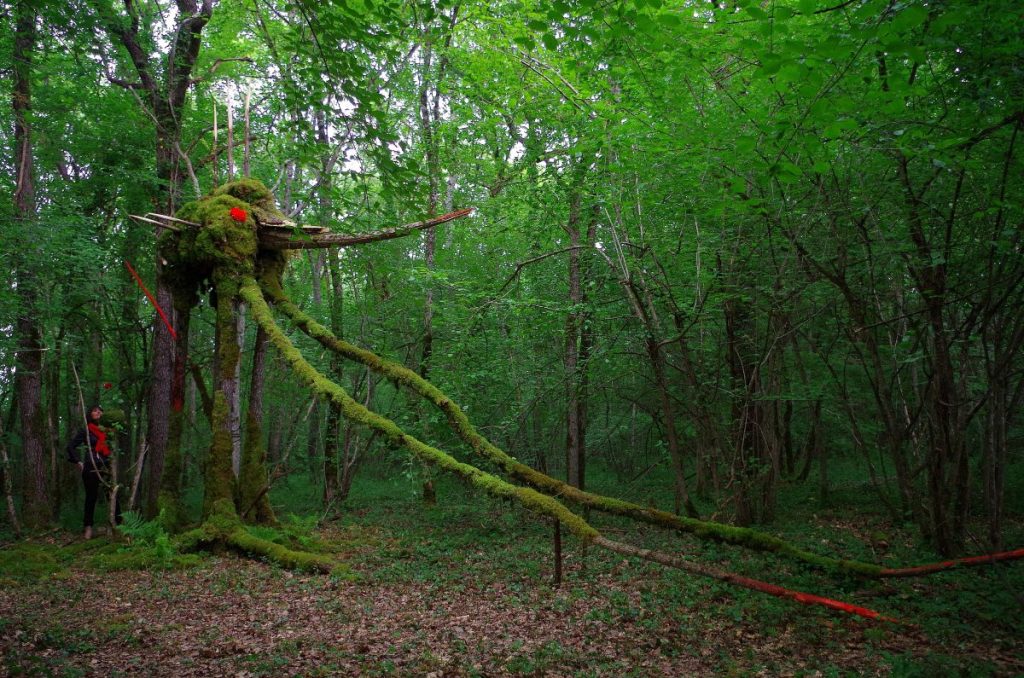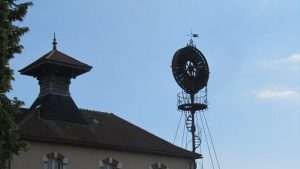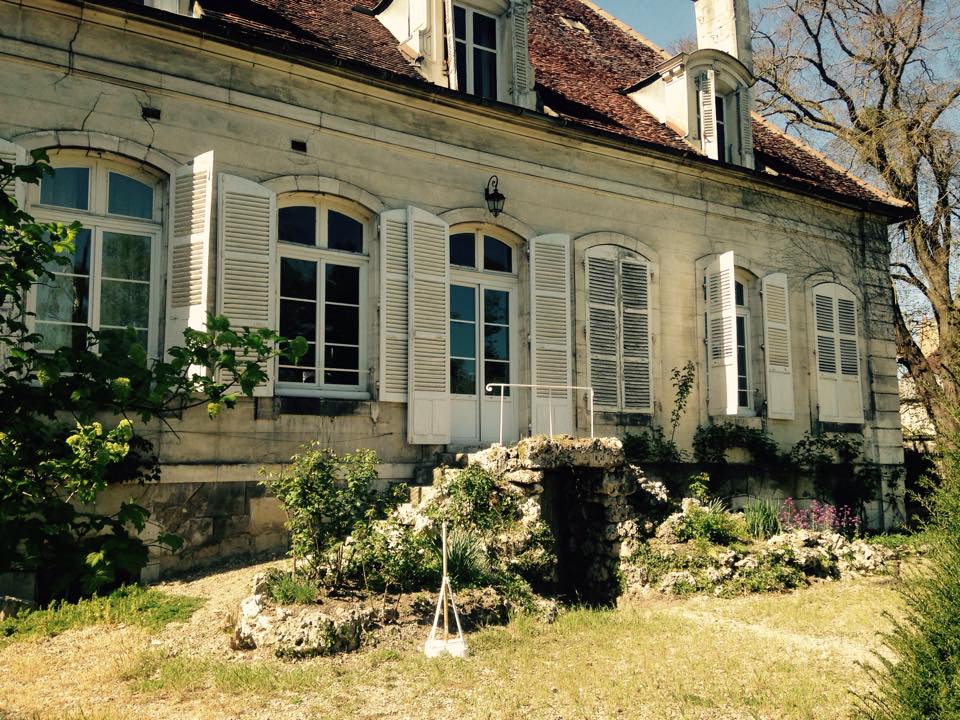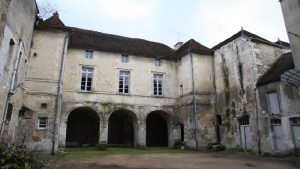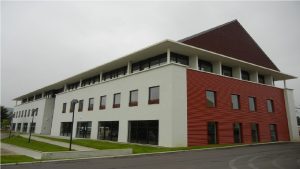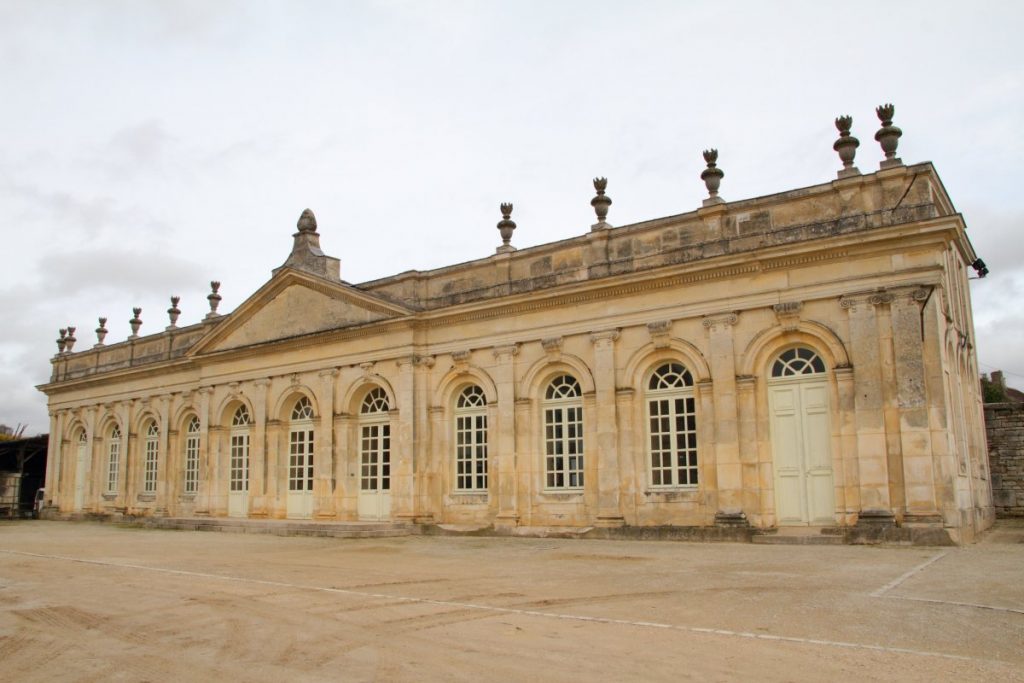Stones!
The Loire Valley has its castles and that of Armançon too. From Nuits-sur-Armançon to Maulnes, from Ancy-le-Franc to Tanlay, discover the Renaissance heritage of these castles that tell the story of France.
Discover also the mysterious Fosse Dionne, source of many legends, or even the largest Hôtel-Dieu of Europe in Tonnerre.
Cross our villages, at the detour of which you will find a lovely little church or an atypical washhouse. You will also discover wonderful exhibition places or pretty art galleries.
Let yourself be seduced by the charm of the heritage of Tonnerre!
Renaissance stop-off
Ancy-le-Franc castle
This stunning Renaissance palace is a masterpiece of Serlio, Italian architect for King Francis I of France. It was built in the middle of an enormous park for Antoine III of Clermont, brother-in-law of Diane de Poitiers who was the mistress of King Henry II of France. Home to one of the largest collections of 16thand 17thcentury murals preserved in France today, the castle of Ancy-le-Franc rivals the Palace of Fontainebleau. Explore the richly decorated apartments and the majestic courtyard, as well as the French and English gardens whose two new flowerbed displays won the Victoires du Paysage award in 2018. Many tour options, events and exhibitions are organized throughout the season for the whole family.
Tanlay castle
This castle began construction in the mid-16thcentury on the foundations of a former fortress. The Coligny Tower, Ligue Tower and the small castle date back to the French Renaissance. A century later, Michel Particelli d’Emery, Superintendent of Finance for Cardinal Mazarin, had the castle completed by the great Dijon architect Pierre Le Muet. His architecture is the perfect balance of classical and Renaissance and its original setting has been used in recent film shoots. The interior is filled with historical furniture and murals. The attraction of the building also lies in the memory of the turbulent chapter in French history that it evokes – the Catholic-Protestant conflict – which took place during the Wars of Religion in the 16thcentury. The Admiral of Coligny, whose family once owned the building, regularly used it as a meeting place for other heads of the Protestant party. The castle’s theatre program for August.
Maulnes castle
Maulnes castle is a Renaissance creation located in the commune of Cruzy-le-Châtel. The pentagon-shaped main building is one of a kind. Come and discover this stunning piece of architecture. Let its mysteries and legends enchant you!
This building is an enigma of the Renaissance. It is structured around an impressive central spiral stairwell. Built in the mid-16thcentury in subtle interplay of light and water, this veritable labyrinth is one of the grand utopian pieces of architecture that leave their mark on the imagination. Over the years, the castle has undergone a huge restoration project and today offers a program of cultural activities and guided tours.
Nuits-sur-Armançon castle
The Nuits-sur-Armançon castle was built in 1560 during the Wars of Religion. It was the scene of violent battles. This Renaissance building is a remarkable example of civil architecture adapted to for defence needs. Transformed after the Revolution into a country retreat, the castle still has many vestiges of its military past such as its indoor well, arrowslits and shooting range. The furnished interiors tell the story of the life at the castle over five centuries with more than twenty rooms with a designated use, all witnesses of the past.
A little bit further… Béru castle
Béru castle stands amongst the vineyards overlooking one of the most charming hillsides in the Chablis region. This residence, which can be found in records dating back to in the 13thcentury, was rebuilt in the 17thcentury and since 1627 has belonged to the Counts of Béru, who are still the owners of this estate.
The Castle underwent changes in the Renaissance and the 18th century. Here, you can see a rare 16thcentury sundial and moondial, a 13thcentury door and its tower, a 13thcentury dovecote with one thousand five hundred pigeonholes and 16thcentury cellars. In the middle of all this, you can find the unique “Béru Close”, an enclosure of historical walls erected in the 13thcentury.
Tonnerroise stop-off
The Hôtel-Dieu
With a 12-hectare park in the town centre and seven centuries of history to tell, Tonnerre Hospital is an impressive site of the region and the town’s past, as well as in the evolution of Western medicine. This Hôtel-Dieu is the oldest in Burgundy (1293) with an impressively large 13thcentury sick ward. This immense building houses the tomb of Marguerite de Bourgogne, the founder, a Burial of Christ statue (1454) and an impressive meridian, a sort of sundial attached to the floor (1785). All this is part of a cultural space, with several visitors’ rooms skilfully blending the history of medicine with gardens, architecture, and religious and contemporary art.
The Fosse Dionne
This spring is a natural resurgence typical of Vaucluse. Converted into a wash house in the 18thcentury, the origin of this spring is still a secret. Its flow is constant yet changing, flowing at an average of three hundred litres per second. Divers who have ventured there have gone back up the underground passage, three hundred and sixty meters long and sixty metres deep!
Saint-Pierre Church
Originally a castle chapel, this collegiate church from the 14thand 16thcenturies overlooks the city of Tonnerre. From the forecourt, enjoy a breathtaking view over the small town of character and its surroundings. Inside, you can discover a historical organ, a chair from the 18thcentury and magnificent stained-glass windows including two 16thcentury grisailles. Many concerts are organized throughout the summer to raise money for the church.
Notre-Dame Church
This church, founded in 1164, was located away from urban areas at the time of its construction as the neighbourhood was not yet inhabited. Today, however, it can be found in the centre of town. As you will see, this building has experienced many twists and turns that have left their mark on its facades. It was burned by the English in 1359, by the Burgundians in 1414, and then by the fire of 1556 and suffered bombing during the last war. It was reconstructed in Gothic style.
The Chevalier d’Eon
Born in Tonnerre in 1728, Chevalier d’Éon was a diplomat and famous figure of European aristocracy. In 1754, he was sent to Russia by Louis XVI, who asked him to dress as a woman to spy on the Tsarina Elizabeth and convince her to join the Franco-Austrian Alliance formed against Prussia and the United Kingdom. Against his will, he then spent the last thirty years of his life dressed as a woman, with twenty-five of those years lived in London.
In Tonnerre, discover:
- Hôtel d’Uzès, his birthplace and a beautiful Renaissance-style residence (16thcentury) to be seen from the outside: rue des Fontenilles.
- The statue erected in his honour in 2018: place de la République.
- His family home, where he resided for seven years, until he was exiled from the court by Louis XVI. Today, this site has been converted into a museum. (Information in the “Museums” section on page…).
Churches!
Churches
Some of the churches in the region are accessible to the public:
- The Church of Saint-Maixent Ancy-le-Libre (13th– 18thcentury), listed as a Historic Monument: open from 1 April to 31 October. Address: rue de l’église 89160 Ancy-le-Libre.
- Saint-Jacques-le-Majeur church of Bernouil (17th– 18thcentury), classified as a Historic Monument: see it from the outside for its unusual quatrefoils clover shape. Address: Grande-Rue 89360 Bernouil.
- Saint Bartholomew church of Cruzy-le-Châtel(13th– 18thcentury),boasts a Neo-Classical entrance designed by architect Claude-Nicolas Ledoux, builder of the Royal Saltworks of Arc-et-Senans (Doubs): closed to the public, impressive views from the outside. Address: rue de la Ville 89740 Cruzy-le-Châtel.
- Saint-Julien church of Cry-sur-Armançon (15th– 18thcentury) and its crypt (11thcentury), listed as a Historic Monument: accessible from April to November every day from 9am to 5pm. Address: 1-3, ruelle Caverot 89390 Cry.
- Saint Pantaléon church of Ravières (late 12thcentury): listed as a Historic Monument. Magnificent late-Gothic entrance. Open every day from 9am to 6pm, contact the Town Hall before visiting: +33 (0)3 86 55 70 68. Address: place de l’église 89390 Ravières
- Saint-Pierre-aux-Liens church of Sambourg: some parts date back to the late 12th Open every day in the summer from 8am to 8pm. Address: rue de l’église 89160 Sambourg
Wash houses!
Wash houses
Take a tour of the region’s wash houses and explore those which are accessible:
- Aisy-sur-Armançon wash house (19thcentury): year-round open access. Address: RD957 89390 Aisy-sur-Armançon
- Ancy-le-Libre wash house (19thcentury): year-round open access. Address: rue Basse 89160 Ancy-le-Libre
- Argenteuil-sur-Armançon wash house: this beautiful wash house from 1834, which is listed as a Historic Monument, is situated on the edge of a large pool with spring tides and is connected to a fountain. It has seven monumental arches. Year-round open access. Address: place du village 89160 Argenteuil-sur-Armançon
- Fulvy wash house: with an impluvium roof, powered by the Burgundy Canal. Year-round open access. Address: route de Fulvy, towards Chassignelles, take the sloping path.
- Quincerotwash house was built in 1884: year-round open access. Address: Grande-Rue 89740 Quincerot
- Roffey wash house: year-round open access. Address: route de Tronchoy 89700 Roffey
- Saint-Martin-sur-Armançon wash house: year-round open access. Address: rue de l’église 89700 Saint-Martin-sur-Armançon
- Les pierres à laver de la mare, Sambourg: year-round open access. Address: D200 89160 Sambourg
- Stigny wash house: the town hall of the village was built on the wash house in the 19th The building is protected, along with the village, by the Recognised Area of Architecture and Heritage label (Aire de Valorisation de l’Architecture et du Patrimoine). The church (1763) can be visited from the entrance gate and the from village via its raised wall walkway. Year-round open access. Address: 2, rue de la Poterne 89160 Stigny
- Tisseywash house, with an impluvium roof, half-underground: year-round open access. Address: 89700 Tissey
Unusual places!
The Forest of Green Giants
The Forest of Green Giantsis located in Argentenay’s public forest is the creation of land artist Alain Bresson. His monumental plant sculptures are displayed in the forest, made to be seen and enjoyed by everyone. These living sculptures, designed to evolve with the seasons, invite visitors to explore nature with a poetic eye and a touch of humour and to reflect on the future and forest protection. The route takes about an hour or more to complete. Time to lose yourself in your thoughts… Year-round open access, further information: +33 (0)3 86 75 22 94 – https://www.facebook.com/foretsgeantsverts/ – www.alain-bresson.com – Address: forêt communale 89160 Argentenay
The analemmatic sundial in the hill of Jully Castle
The analemmatic sundialon the hill of Jully Castleis set up on the ground and does not have hour lines but is marked only with lines laid out on an ellipse. The user stands on this slab, with their back to the sun and their heels positioned according to the date. The direction of the shadow, which actually depends on the position of the sun in the sky, displays the solar hour. Open access. Address: Château de Jully 89160 Jully
Bollée windmill of Arthonnay
Bollée windmill of Arthonnay supplied water to the wash house located under the village town hall from 1897 to 1939. This is a type n°2 windmill from the builder Auguste Bollée. It is one of the last windmills constructed at the end of the 19thcentury that is still standing. It has all been listed as a Historic Monument since 3 May 2003 and also enjoys the “20thcentury Heritage” label. Restoration planned for 2019. Address: rue de Noise 89740 Arthonnay
Cultural stop-off : museum and exhibition sites!
Throughout the season, there are many places that invite you to discover artists from the region or from elsewhere, in exhibition halls with diverse programmes.
Museum and Gallery of Pottery at Ancy-Le-Fanc
Today, the museum and the gallery are set up in former vaulted cellars where the earth for pottery making was matured. The pottery works were founded by the Marquis of Louvois-Courtanvaux, owner of Ancy-le-Franc castle, who worked there for around forty years. The pottery works ceased activity in 1807. You can explore temporary exhibitions of local artists in the gallery. Open from 1 April to 30 September, Tuesday to Sunday from 2.30 to 6.30pm, free entry for temporary exhibitions / €1 for the museum visit, address: 89160 Grande-Rue Ancy-le-Franc
Lelœil gallery at Tanlay
At Tanlay’s castle doors, come and be amazed by this art gallery with free entry. It is quite the pleasant surprise in this Burgundian village! The exhibition can be visited by appointment and is open from Easter to All Saints Day, between Wednesdays and Sundays from 2 to 7pm. Throughout the season, come and enjoy this permanent exhibition that showcases a variety of different themes! Further information: +33 (0)3 86 55 01 44 – Galerie@leloeil.com – www.leloeil.com – Address: galerie d’Art Le L’œil, place du Château, 89430, Tanlay.
Chevalier d’Éon museum
When exiled from the court by Louis XVI, the knight of Eon spent seven years living in his family home at Tonnerre. This building has now been transformed into a museum. Let us guide you through the history of this illustrious character and show you the unique pieces that he once owned.
Open from April to November on Fridays, Saturdays and Sundays for guided tours at 10.30am, 3pm and 5pm. Tours are available all year round by appointment. Cost: €8. Further information: 22, rue du Pont 89700 Tonnerre – +33 (0)6 86 37 25 63 – +33 (0)9 67 22 94 03 – Chevalierdeon@orange.fr – www.muséechevalierdeon.fr
Hotel Cœurderoy at Tonnerre
This former hotel that is typical of the XVIthcentury style is now a cultural space that hosts temporary exhibitions. The exhibitions can be visited throughout the season and you are sure to find something for everyone. The cultural space is open from April to November on the following days: from Wednesday to Friday between 2 and 6pm; Saturdays and Sundays from 10am to 12pm and from 2 to 6pm (closed on Mondays and Tuesdays). Free entry and unrestricted access. Further information: +33 (0)3 86 55 22 55 – Bienvenue@mairie-tonnerre.fr. Address: rue Rougemont, 89700, Tonnerre
Hospital Cultural Center of Tonnerre
The hospital’s cultural center boasts several visitor rooms that skilfully combine the history of medicine, gardens, architecture, religious art and contemporary art. Open all year round. Entrance fees are between €5 and €10. Further information:+33 (0)3 86 54 34 79 – +33 (0)3 86 54 35 01 – Espaceculturel@ch-tonnerre.fr – Https://espace-culturel-de-lhopital-de-tonnerre.business.site/ – Address: Place Marguerite de Bourgogne 89700 Tonnerre
Ernest Cœurderoy Library Multimedia at Tonnerre
Throughout the year, the Ernest Coeurderoy Multimedia Library hosts temporary exhibitions, book signing events, activities for children and discussion groups (Philosophy, literary and musical). Open from Tuesday to Saturday. Further information: +33 (0)3 86 55 03 82 – Bibliothequetonnerre@wanadoo.fr – Http://bib-tonnerre.dnsalias.net/ – Address: le Sémaphore, RDC, 2, avenue de la Gare 89700 Tonnerre
Burgundy Art Gallery at Ravières
This gallery of associative art is a place of exhibitions, and works of art including paintings, photography and sculptures and also a photo studio workshop. The Burgundy Art Gallery association displays different exhibitions every month! Open to the public on Saturdays and Sundays and on public holidays between 3 and 7pm and by appointment. Further information: +33 (0)3 58 16 92 33 – +33 (0)6 28 45 69 19 – Bourgogneartgalerie@gmail.com – Address: 12, place de l’Hôtel-de-Ville 89390 Ravières
The Orangerie at Yrouerre
The only trace left of the XVIIIthcentury castle, the Orangerie was used to house delicate plants that could not withstand the harsh winters. It is for this reason that, around 1767, orange trees could be seen blossoming in Yrouerre. The main south-facing side of the Orangerie consists of arches separated by pilasters. Many artists showcase their work in this space, which is open for exhibitions held during the spring and summer. Further information: +33 (0)3 86 75 93 96 – Yrouerre.mairie@wanadoo.fr – Address: Mairie d’Yrouerre, 1, rue de l’Orangerie 89700 Yrouerre
Guided tours!
Discover art
Art historian and guide-speaker, Amandine Chevallier offers guided tours of our towns and villages (Tonnerre, Ancy-le-Franc, Chablis, Pontigny, Cravant, …).
Further information : Amandine CHEVALLIER
32 grande rue, 89800 Beines – +33(0)6 86 22 30 02 – http://www.miseenart.com
Discover the wealths of our territory





